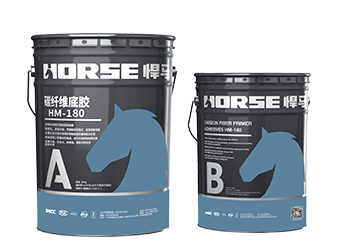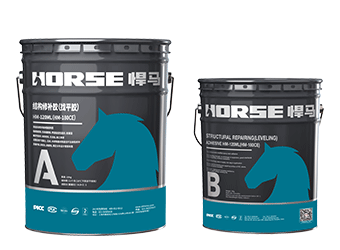Solutions
Horse Construction offers full range of structural strengthening materials with technical supports, documentation supports, products supports, project supports.
carbon fiber retrofitting concrete

Surface treatment of concrete retrofitting with carbon fiber
(1) Surface treatment should achieve three goals:
Ensure that the structure body and the carbon fiber fabric are firmly bonded;
Derusting, decontamination and purification treatment of the aged parts of the concrete surface;
Use structural glue to repair cracks, fill holes, adjust height differences, and cut sharp corners to ensure that the carbon fiber cloth is bonded to a reliable substrate.
(2) The exposed part of the steel bar must be treated with rust prevention. If the damage is serious, measures shall be taken to remedy it.
(3) Crack repair.
If the crack is more than 5mm, use high-strength cement mortar for pouring;
The crack width is greater than 0.1mm and less than 5mm. Special chemical crack injection glue is used to infuse the cracks, mainly low-pressure and slow injection, and polished and flattened after curing;
The crack width is less than 0.1mm, and the surface is closed with seam sealant.
(4) Surface repair: If the bonded concrete surface has defects, holes or honeycomb pitted surface, repair glue should be used.
Repair defects or holes. During the construction of the original structure or in the later operation, the structure will have chipped corners, holes, and honeycomb pitted surface, which should be repaired with repair glue.
Height difference adjustment. The height difference of the concrete surface due to the dislocation of the template is also repaired before the fiber is pasted. High-strength mortar can be used for large areas, and repair glue can be used for local areas.
(5) Surface dirt and carbide treatment. Use disc grinders, sandblasting, high-pressure water washing and other methods to treat the surface into a flat and regular surface without looseness, fragile pieces and dirt. Grease dirt is degreasing with neutral detergent, dust is removed with high-pressure air gun, and the concrete surface is fully dried before bonding the fiber cloth.
(6) Corner trimming processing. In order to prevent the fiber cloth at the inner concave corners from being easily peeled off or pulled up during bonding, repairing cement can be used to repair the rounded corners, and the rounded corner radius R should meet the specification requirements.
For prismatic columns or sharp convex corner structures, the fibers at the sharp corners will have a greater stress concentration, which is likely to cause the carbon fibers to break, so the treatment is performed. A grinding machine can be used to modify the edges and corners into an arc of radius R. Use repair glue for surface modification, and use a curved measuring tool to check to ensure that the modified corner radius R meets the specification requirements (special structures are in accordance with the relevant specifications).
You can find anything here you are in need of, have a trust trying on these products, you will find the big difference after that.

High strength, unidirectional carbon fiber wrap pre-saturated to form a carbon fiber reinforced polymer (CFRP) wrap used to strengthen structural concrete elements.

Low viscosity, strong penetration carbon fiber primer for reinforced concrete surface to enhace the defect part

Good thixotropy carbon fiber leveling adhesive for concrete surface repairing